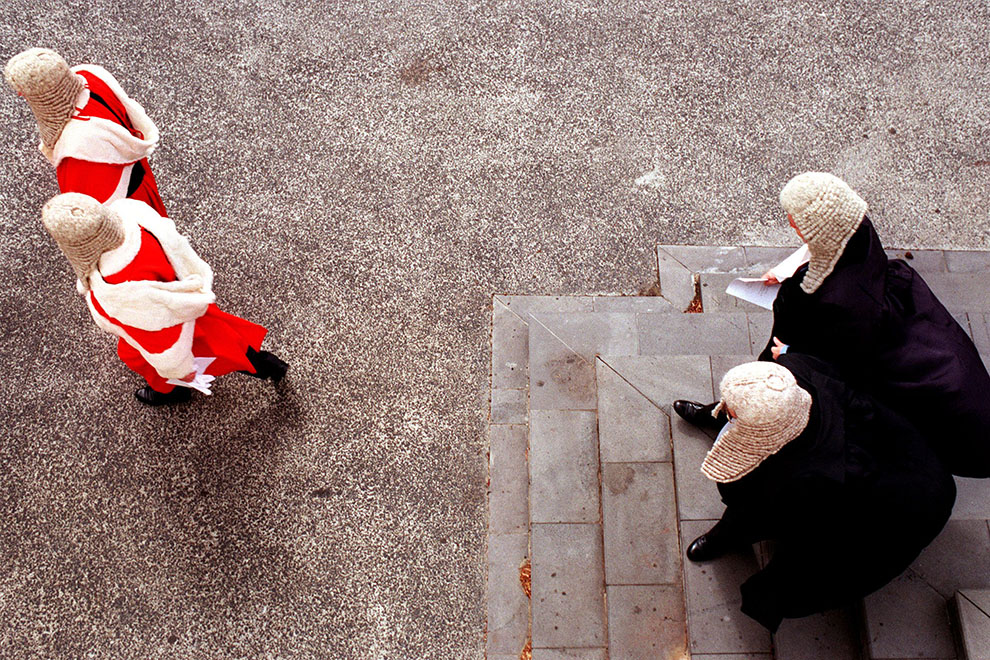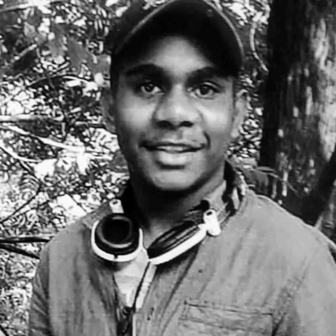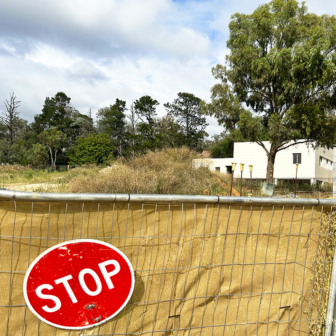And just like that, the wait was over. When two lecterns were put in place for a hastily convened media conference on Wednesday, High Court watchers took note. When Christian Porter strode out with Scott Morrison, it became a certainty: we were about to learn the names of two new High Court justices.
The contrast with the confirmation of Justice Amy Coney Barrett, less than twenty-four hours earlier, couldn’t be greater. There was no media bombardment, no political circus, no sequence of public hearings. But nor was there any real certainty about when an announcement was to be made, let alone who would be appointed. Until Porter appeared just before noon on Wednesday, we existed in an information vacuum.
Now we knew: Jacqueline Gleeson and Simon Steward — both in their early fifties and both considered “safe” appointments — were to be elevated from the Federal Court to the High Court. And while the Australian legal community has since been widely supportive of these appointments — both had been mooted as possible candidates — the appointment process itself has caused growing discomfort.
Meet the judges
Justice Simon Steward graduated from the University of Melbourne Law School in 1991, and went on to complete a Master of Laws at the same university with a thesis on the “Constitutional Limitation of Taxation Powers.” His expertise in tax has been a defining feature of his legal practice: he was called to the bar in 1999, took silk in 2009, and was recognised as the leading barrister in tax law in 2015.
Steward has a reputation as a ferocious reader with an encyclopaedic knowledge of history. He is an avid collector of antiques and fine art, and a talented painter himself. Family legend tells of a twelve-year-old Simon visiting Melbourne with his father, looking up at the towering Supreme Court of Victoria — which was also the High Court building in those days — and exclaiming, “This is where I want to be.” Justice Steward will now fulfil this dream.
Given that he was only appointed to the Federal Court in 2018, however, he has had little time yet to establish himself as a jurist. While considered a favourite among legal conservatives who espouse a “black-letter” approach to the law, his limited track record makes it hard to predict how he will evolve on the High Court.
Justice Jacqueline Gleeson was educated at the University of Sydney, where she completed a Bachelor of Arts in 1986, a Bachelor of Laws in 1989, and a Master of Laws in 2007 (focusing on administrative, regulatory and trade practices law). She was admitted to practice in 1989 and called to the bar in 1991. Her career has been more varied than Justice Steward’s and her public profile much higher. She was briefed on the Canberra bushfire litigation and represented Alan Jones at the cash-for-comment inquiry. She served as general counsel at the Australian Broadcasting Authority, and as a senior executive lawyer for the Australian government solicitor.
After returning to the bar in 2007, where she quickly established a stellar reputation, Justice Gleeson surprised few when she took silk in 2012. She was appointed to the Federal Court in 2014, and has since decided a number of cases that have captured attention, including the implied freedom of political communication case of Chief of the Defence Force v Gaynor.
As counsel, both of the new judges have appeared a handful of times in the High Court, but they remain best known in their home states. Their appointments are sound, if not spectacular. This is no criticism of them personally, but a reflection on their status as appointees early rather than later in their judicial careers. Neither judge has yet established themselves as a leading jurist of their generation — though they will now have the time and opportunity to do so on the High Court.
How they were appointed
Although the High Court of Australia is mandated by section 71 of the Constitution, both that document and subsequent legislation are conspicuously silent about the process to be followed in appointing judges. Section 72 of the Constitution states only that “the Justices of the High Court… shall be appointed by the Governor-General in Council.” In practice, this means that appointees are nominated by the prime minister following consideration by federal cabinet, with significant weight given to the recommendation of the attorney-general.
The only relevant qualifications are laid out in the High Court of Australia Act 1979, which requires appointees to have been either a judge of an Australian court or enrolled as a legal practitioner for at least five years in Australia.
The requirements for vetting or consulting are similarly scant: the federal attorney‑general is required merely to “consult” with his or her state counterparts. This happens in private, and need play no role in the final decision. In practice, a wider range of discussions will occur — with bar associations, law societies and so on — but the whole process occurs behind closed doors.
The result is that federal cabinet has a largely unfettered discretion to appoint almost any lawyer they want to the High Court. Nearly every aspect, including timing, candidates, relevant criteria and consultation process, is secret.
Fortunately, Australia has developed strong political conventions to augment this secretive process, and they have largely resulted in an apolitical bench populated by eminent judges. That tradition looks to be continued here. By all accounts, both Justice Steward and Justice Gleeson have brilliant legal minds, irreproachable characters, and incredible work ethics, all indications that once they find their feet they will enrich the bench.
Nevertheless, we should be feeling uncomfortable about the increasingly outdated process that put them there, and the hidden factors that contributed to their appointment.
Critiques, taboo and the “if it ain’t broke…” mentality
At this point, it is important to be very clear about two things.
First, what follows is in no way an attack on the quality, experience or integrity of the new appointments. My concern is with the general and systemic process, not particular outcomes.
Second, public discussion about the merits of these appointments and systemic problems in appointment processes are largely treated as taboo in the legal community. We don’t talk about such things in polite company. When the journalist Jan Fran revealed that 60 per cent of NSW Supreme Court judges went to one university (and 17 per cent to a single elite private school), for example, nobody from that jurisdiction — lawyer or academic — would go on the record to comment.
It is understandable that lawyers will hesitate to make observations that may be construed as critical of a judge they might later appear before as counsel. But it is vital that we don’t let such taboos blunt our honest and informed discussion about the operation of the judicial system.
We should be frankly and openly discussing the type of person who should be appointed to our highest court. Contrary to the perception that pretty well anyone at superior court level is suitable for the High Court, it is clear — both conceptually and empirically — that individual judges matter.
We need such conversations precisely because of the number of uncomfortable issues raised by judicial appointments. In too many ways, the current system no longer reflects community expectations.
A pro-federal bias? First comes the concern that one of the key questions raised in the vetting of potential judges is whether they are likely to favour federal over state interests. The controversial “aliens” case of Love v the Commonwealth earlier this year, where the court held that non-resident Aboriginal Australians could not be constitutional “aliens” subject to deportation, prompted calls from conservative quarters such as the Institute of Public Affairs to appoint more conservative, pro-Commonwealth judges — a call that led to a rare rebuke from the Judicial Conference of Australia. The University of NSW’s Andrew Lynch has observed that appointing High Court judges from the Federal Court is now a “dominant trend,” and it is not far-fetched to suggest that such a judge may be more sympathetic to federal, as opposed to state, rights.
The High Court is supposed to be the nation’s court, however, not the tool of the Commonwealth. We need to ensure this ideal is properly reflected in the appointment process.
What makes a good judge? Second, there seems to be no widely accepted concept of what qualities are desirable in a High Court judge. The broad consensus was that one of the latest appointments would be male and one female; that one would come from Victoria and one from New South Wales; and that both would be relatively conservative. And in the event all three predictions proved correct.
But these criteria are suspect. For example, the rare opportunity to appoint two women — creating a majority of female judges for the first time — doesn’t seem to have been seriously considered. And the prioritisation of the two biggest states, when neither a Tasmanian nor a South Australian has ever been appointed, continues to cause disquiet.
Perhaps most concerning, however, is the perception that juridical conservatism played a major part in the appointment. While both appointees are well respected, no one would suggest they are the most singularly eminent judges outside the High Court. Neither has yet had the opportunity to develop such a reputation. Reports have suggested that some “senior lawyers” are “privately critical of the government for not picking a ‘superior’ candidate,” and a number of state Supreme Court judges clearly have more experience and richer credentials.
Added to this are concerns about the institutional balance of the court. The retirement of Justice Virginia Bell leaves the court without any judge with significant criminal law experience. Given the number of criminal law cases in the court’s caseload, this absence is problematic. Justice Steward will bring tax expertise, but such cases are rare; Justice Gleeson brings a wide-ranging practice experience with a broad public law specialisation. Whether disciplinary expertise should be a consideration for appointment remains unresolved.
Both new appointees clearly have strong potential. The (genuine) question is whether that is the proper basis for appointment. Is it better to appoint judges early, with the time to develop on the bench? Or should we appoint more experienced judges who arrive with more immediate capacity but may not be there as long?
Are age limits distorting appointments? The concern about judges’ attributes feeds into a third issue: age limits and their potential to distort judicial appointments. After Justice McTiernan reluctantly retired in 1976 after forty-six years on the bench, a retirement age of seventy was added to the Constitution by referendum. While this prevents judges clinging to their judicial position into very old age, it potentially creates a structural incentive for politicians to appoint a “sympathetic” judge at a young age in an attempt to control the court’s agenda for many years.
Some uncomfortable evidence points to such a trend. While the median age for the last ten appointments is sixty years, the previous two appointees (Justices Gordon and Edelman) were fifty-one and forty-three respectively. At fifty-one and fifty-four, Justices Steward and Gleeson are at the lower end of the recent range.
On top of this, judges have increasingly tended to see out their full constitutional terms. Until the turn of the century, it remained common for judges to retire in their sixties, but since Mary Gaudron retired at sixty in 2003 no judge has retired early.
Not only does the appointment of younger judges appear to shape the composition for a long time — Justice Steward is not due to retire until 2039 — it also complicates any assessment of their career against more experienced judges.
Systemic reform may address this issue. If, for example, we replaced the retirement provision with a term limit — say ten years — we could see judges appointed in the very prime of their age and experience rather than because of their perceived potential.
What about perceptions of elitism? At this point, we enter deep taboo territory. For almost the very first thing anyone mentions about Justice Gleeson has nothing to do with her capacity but a lot to do with her lineage. “It is not really possible to appoint Justice Jacqueline Gleeson without noting she is the eldest daughter of [former High Court chief justice] Murray Gleeson; that places her in a rather unique position,” Christian Porter observed in announcing her appointment. “I am told that is a first in common law countries.”
Not only was Porter wrong about that uniqueness (Mary Finlay Geoghegan followed both her father and her husband onto the Irish Supreme Court), his words also raise the worrying issue of a lack of diversity at the elite level of the legal profession, as evidenced by a pattern of “judicial dynasties.” The appointment of the offspring of a former justice, who also happens to be a close friend of another, raises questions about the transparency of the process of selecting judges and, perhaps, concerns about diversity on the bench (beyond simply gender diversity).
A quick count identifies that nearly fifteen judges in Australian superior courts are sons or daughters of judges. Without belittling their individual achievements, that figure is highly suggestive of an entrenched equity problem. The “optics” of this matter, particularly given the dependence of the judicial role on public confidence and acceptance, creates an uncomfortable perception of a closed shop.
Added to this is the potential pressure on insiders not to rock the boat and thus undermine their chances of preferment. The legal story of the year has been the fall from grace of former High Court judge Dyson Heydon. One of the common complaints at the time was that Heydon’s reputation was an open secret but that few felt capable of speaking out. Where appointments disproportionately come from a small cohort of the legal elite, the risks of speaking out may be particularly high.
Reforms to create a more open appointment system may not only enhance the diversity and equity of judicial appointments, but also help make the legal profession itself more open, inclusive and fair.
The enduring temptations of politics: Finally, there remains an unsettling potential for naked political considerations to distort the judicial appointment process. The current model is highly dependent on political conventions regarding the appointment of judges on a largely apolitical basis.
Unfortunately, the past four years globally have shown just how brittle political conventions can be. Once conventions shatter, the social legitimacy of public institutions — including courts — can quickly evaporate. The politicisation of the US Supreme Court is a case in point, with appointments now becoming a matter of base politics.
In Australia we have recent experience of nakedly political judicial appointments. In 2014, Queensland premier Campbell Newman controversially appointed his friend, the wildly unqualified Tim Carmody, as chief justice of the Queensland Supreme Court. The crisis that ensued shook that great institution to its very core, and has been described as Australia’s “greatest judicial crisis.”
If such events were to be repeated at the national level, the damage would be infinitely worse. The reputation of the High Court could take a generation to recover.
A chance for reform
Fortunately there are well-accepted alternatives to the increasingly anachronistic and unduly secretive current appointment process.
Perhaps the most promising involves explicitly minimising the role of political interests by creating a more open and accountable commission to appoint judges. Britain’s Judicial Appointments Commission has been making lower court appointments for the past fifteen years. New appointments to the UK Supreme Court are recommended by a statutory selection committee to the Lord Chancellor, who has a limited capacity to accept, reject or ask the committee to reconsider.
This process has been stunningly successful, and has contributed to the high esteem the new Supreme Court has quickly established. The British model could easily be adapted for all Australia’s federal judicial appointments. Such reforms would bring our appointment process back in line with community expectations, and largely eliminate the concerns outlined above.
I wish Justice Steward and Justice Gleeson genuine congratulations on their appointment. But I hope we never again have to see the process play out in this way. We shouldn’t need to wait for another last-minute press conference with a surprise political announcement. We need a more open, accountable appointment system. •




